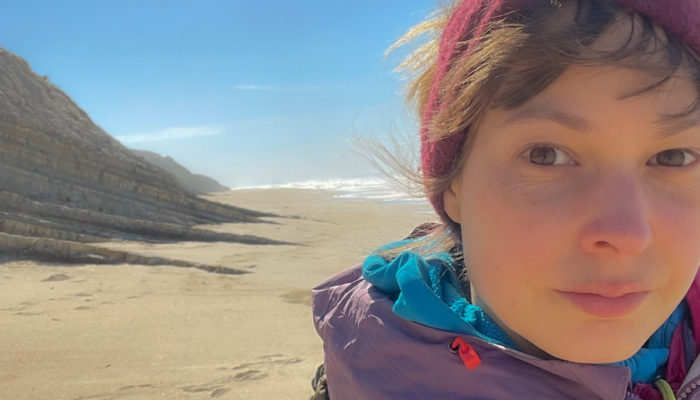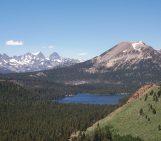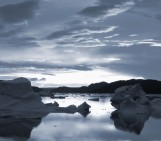
Hi Marisa. Thank you for joining us today! Could you tell our readers a bit about yourself and your research?
Hi, I am a geologist and organic geochemist, currently working as a postdoc at the NIOZ Netherlands Institute for Sea Research based on the island Texel. After my geology-focused undergraduate and master studies in Germany at the RWTH Aachen and Heidelberg University, I graduated with a PhD in Earth Sciences from Oxford University in the UK in 2018. This was followed by a short postdoc in Stellenbosch, South Africa before I moved to the Netherlands. My research focus lies on studying climate dynamics of the geological past, more specifically, on carbon cycle dynamics during intervals of extreme climate change and mass extinctions. For this, I study molecular fossils in the marine record, meaning the remains of microorganisms that are preserved over millions of years and still carry information on the environment they once lived in.
Why is it important for us to study ancient extinction events?
Facing rapid climate change today urges us to understand how the Earth’s environment reacts to rising temperatures caused by rising carbon dioxide levels. Past extinction events were largely triggered by the rapid release of greenhouse gases into the atmosphere. The increase in atmospheric carbon led to global warming and associated changes in the environment, such as ocean acidification, rising sea-levels and changes in ocean circulation. These are all phenomena we are also experiencing today as a result of anthropogenic greenhouse gas emissions. The better we can decipher the geochemical record associated with past climate change, the better we can understand, prepare for, and mitigate the environmental consequences to rising global temperatures today.
Exhuming fossils in paleontological research invokes the image of researchers kneeling in dirt, trowel or brush in hand. But your research is focusing on molecular fossils; how is that different and what does your work involve?
Studying molecular fossils involves both, hands-on sampling work and more delicate sample preparation and analysis in the lab, and I really enjoy being involved in all these tasks. The sea sediments I work with, which are mainly Jurassic in age, are sampled from scientific drill-cores and field outcrops. In the geochemistry lab I extract the molecular fossils, mostly the organic remains of lipid membranes of microorganisms. We can then identify the exact structure of individual molecules, which hold information about what organisms produced them, like algae or bacteria, and on what environmental conditions these organisms adapted to, such as the oxygenation state of the water column. Besides compound identification, we can also determine the stable carbon-isotopic composition of the individual fossil compounds. The stable carbon isotope ratio (13C/12C) of photosynthesizing microorganisms depends, amongst others, on the concentration of carbon dioxide in the water, which is in balance with carbon dioxide in the atmosphere. Therefore, we can use this information for environmental reconstructions, such as quantifying carbon-dioxide levels.
Climate change communication is largely aiming to educate audiences on the pressing need to take action in confronting the climate crisis. The research of ancient molecules and the climate change of the geological past, dating millions of years back, is very removed from the broader social imagination of climate research. What do you think are the key challenges for paleoclimate researchers communicating their work?
You are right. The relevance of paleoclimate research is often not intuitive to a more general audience. It is important to stress that the recent increase in CO2 concentration is unprecedented, meaning faster and larger in magnitude compared to what has been measured from ice-core records covering the past 800,000 years. So there is a need to go further back in time to find analogues to study. From what I have experienced, the most pressing questions from the broader audience do, however, largely concern the climate of the future, meaning the near future, and not on geological time scales. So, when it comes to paleoclimate outreach, it is important to transfer the relevance of our work into the present and future as much as possible, but also to point out the limitations of paleoclimate research as such. The Earth’s climate system is highly complex, and it requires a multi-disciplinary approach to make meaningful projections. It’s a team effort! I also think that because of the complexity, and given the relevance of the topic, it is becoming more and more important for researchers to collaborate with science communicators, who are trained in conveying research approaches from different fields into the key messages that are of general interest to a broad audience.
Finally, what’s next on the horizon for you?
More exciting research! As early career scientist, my aim is to get experience from collaborating with different institutions and to build a scientific network. Currently I am preparing for a research visit in Japan to integrate different techniques into my research. The far future is more difficult to predict, but I am excited about new projects and new techniques that will drive the research on the carbon cycle further.




